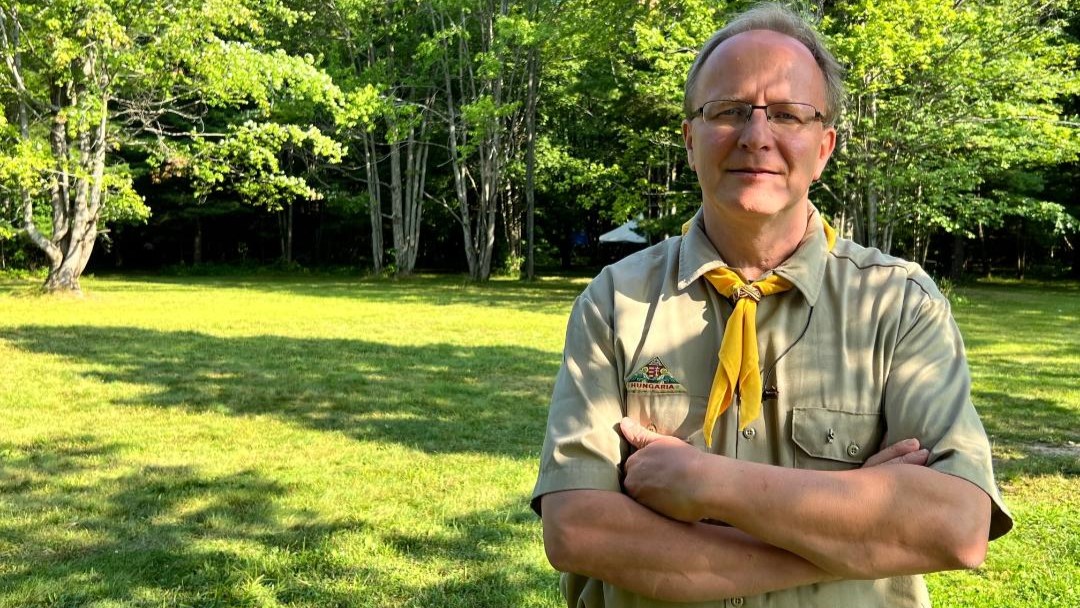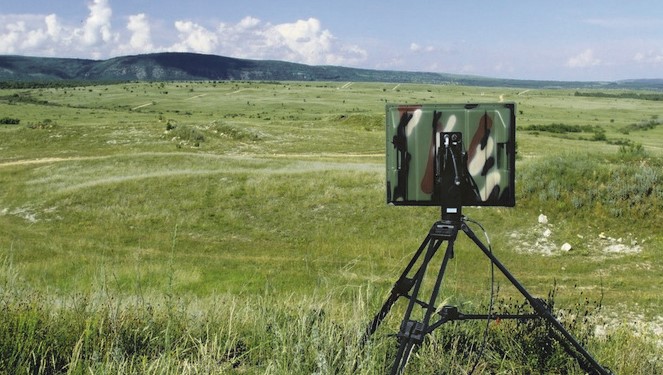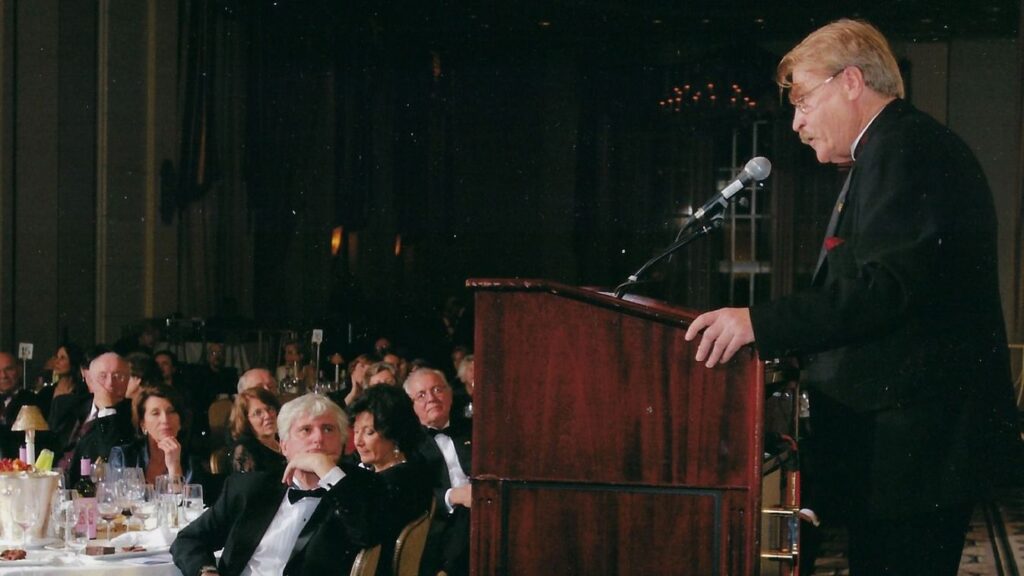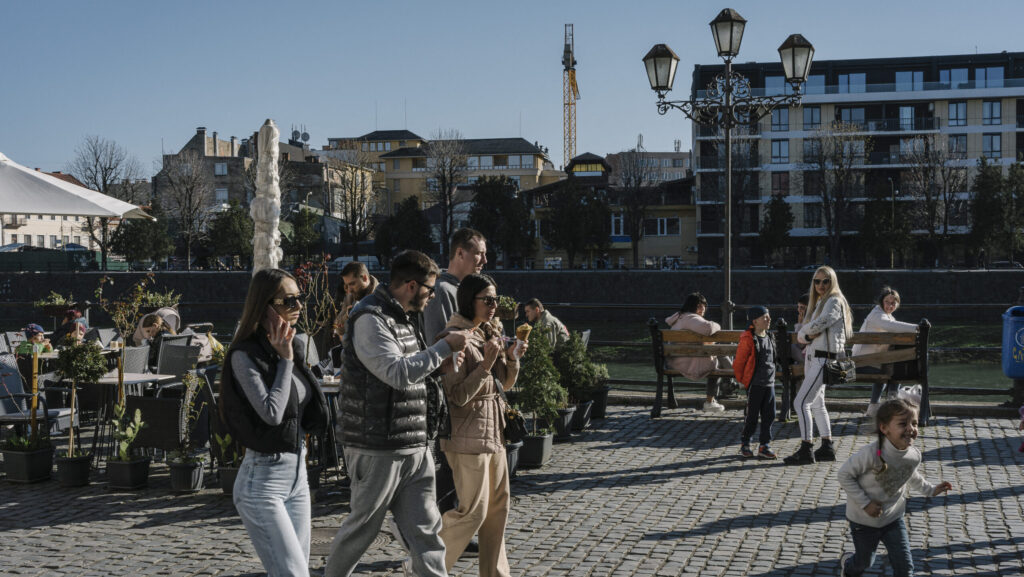This is an abridged version of the original interview first published on 777.hu.
Father Tamás Forrai was born and raised in Budapest, and first became a teacher, then a Jesuit priest. He was a high school principal in Miskolc, a provincial in Budapest and most recently a parish priest in Toronto, Canada for six years. He became a scout in Hungary and was a regular participant in the scout leadership training camps of Fillmore in upstate New York, where we met. I asked him about the situation of the Hungarian communities and Hungarian Jesuits in Canada as well as about the challenges and opportunities of his own service. One year after the interview, he returned home and has just started his new ministry in Pécs.
***
What were the most important stages of your service?
I grew up and went to school in Budapest, Hungary. I graduated as a history and Latin teacher at Eötvös Loránd University (ELTE). Parallel to this, I started studying theology. By the time I graduated from ELTE in 1989 I came to the decision to become a priest. I met the Jesuits during my theology studies and wished to belong to a religious community, so I entered the Jesuit novitiate, one of the orders that were being re-established after the 1989–90 regime change in Hungary. I was ordained a priest in 1998 and since then I’ve served at three places: 12 years at the Jesuit high school in Miskolc, Hungary; six and a half years at the order’s headquarters in Budapest; and I have recently started my seventh year in Toronto, Canada.
There was a strong Hungarian Jesuit presence in Canada, even a novitiate, right?
Yes, but the clergy in the diaspora is undergoing a transformation, and this affects pastoral care. The last representatives of the generation of pastors who fled the communist regimes of Hungary and the Carpathian Basin in the 1940s and 1950s are passing away. The pastoral ministry of the Hungarian diaspora in the U.S. was well-established by the early 1900s on the back of the first large immigration wave, while significant Hungarian immigration to Canada only began after World War II and really intensified only after the revolution of 1956 was crushed. The Jesuit presence in Canadian pastoral ministry was very strong from the beginning. Hungarian Jesuits saw much earlier than many others that the order wouldn’t be able to function freely under communism. Those who had been ordained had to stay in Hungary and prepare for an underground service, while those who had been in the early stages of their training were asked to flee. There was a certain optimism among them that they’d return shortly when communism collapsed. By the early 1950s there was a large community of young Hungarian Jesuits in the West, and when it became clear that they couldn’t return any time soon, they scattered around the world. They undertook a broad Hungarian ministry in Canada serving growing Hungarian Catholic communities across the country. Jesuits have been serving in Toronto since 1948, and in the 1950s they were even able to establish an immigrant novitiate here.
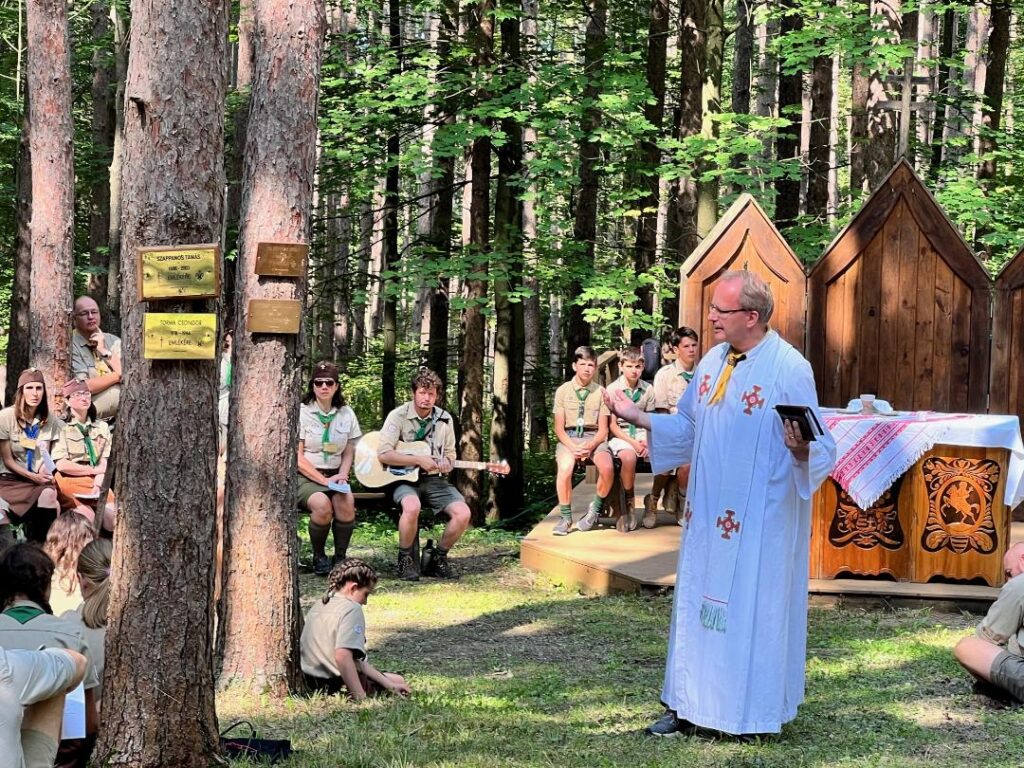
What changed with the collapse of communism in 1989–90?
That’s when the identity of the Hungarian diaspora was shaken. The Jesuits started a reverse mission back to Hungary. There were communities, for example in Courtland, where assimilation had reached such a level that the Hungarian population had simply disappeared. Elsewhere, for instance in Montreal, Hamilton, Vancouver, and London (Ontario) the Jesuits handed over the ministry to diocesan priests. In some places, Hungarian-language service continued for one or two generations of priests, but by now these communities had also assimilated. The Hungarian Catholic community in Toronto was very supportive of the Jesuits, who decided to stay as long as they can and that the Hungarian community needed them.
Why did you accept to serve overseas?
I finished my previous ministry in 2017. When asked about the next task I’d like to take on, I replied I could imagine being part of virtually any of the Hungarian Jesuit ministries. It hadn’t even occurred to me that Toronto was one of them, even though I had visited North America often before, both as a school principal and as the Provincial. We decided that I’d do half time working on social programs and half time starting a doctoral school in political science. I’ve been given a quiet period to pursue these new paths. First, I was in a Trappist monastery during Lent 2017, then I went to Georgetown University at Washington, DC for a free reading course. As I was preparing to return to Hungary, I got a call from the provincial… ‘There’s trouble in Toronto,’ he said, suggesting I should come here. I asked for ten days to consider, and finally said yes and cancelled my studies in political science.
In what sense was there trouble in Toronto? Could you briefly introduce the local Hungarian community?
St. Elizabeth’s parish is the largest Hungarian Catholic community outside the Carpathian Basin with almost 300 people at a usual Sunday Mass. We are also a cultural center, having a weekend Hungarian school, a unique high school, scouting and a dance ensemble. All these in a 40-year-old, modern, very user-friendly building complex, at one of the most accessible locations in the Toronto metropolitan area. There were problems at many levels. Let’s start with the huge generational gap. The 1956er generation very much defined Hungarian immigration in Canada in a very characteristic way, for a long period of 50–60 years. The self-confidence of the 56er generation had a downside: they couldn’t successfully pass on the baton. They didn’t seek out their successors, often even excluded the next generation. A person or a community with a great sense of strength often cannot cope with their own weaknesses, their own limits. That’s why the sudden collapse occurred: there was nobody to take things over from the outgoing great generation.
The second problem is the lack of cooperation between too many small and fragmented organizations. There are an estimated 40–50,000 Hungarians living in Toronto and its vicinity. However, only a very small fraction of this mass is actively involved in the Hungarian community: probably not more than approximately 1,500 individuals. In the past, a variety of organizations, cultural, age and church groups could flourish. There is one Catholic parish, four Reformed, one Lutheran, a strong Baptist and also a few Evangelical communities; all of these are visible, but cooperation between them and the other secular groups has never been fully developed. The strong 56er presence across all organizations caused less political fragmentation than in many Hungarian American communities across the border, but perhaps they felt that they were too strong: they didn’t care about others, and their initiatives often became self-serving, inward-looking. They couldn’t pursue a common larger purpose, and their activities were also often complicated by personal rivalries.
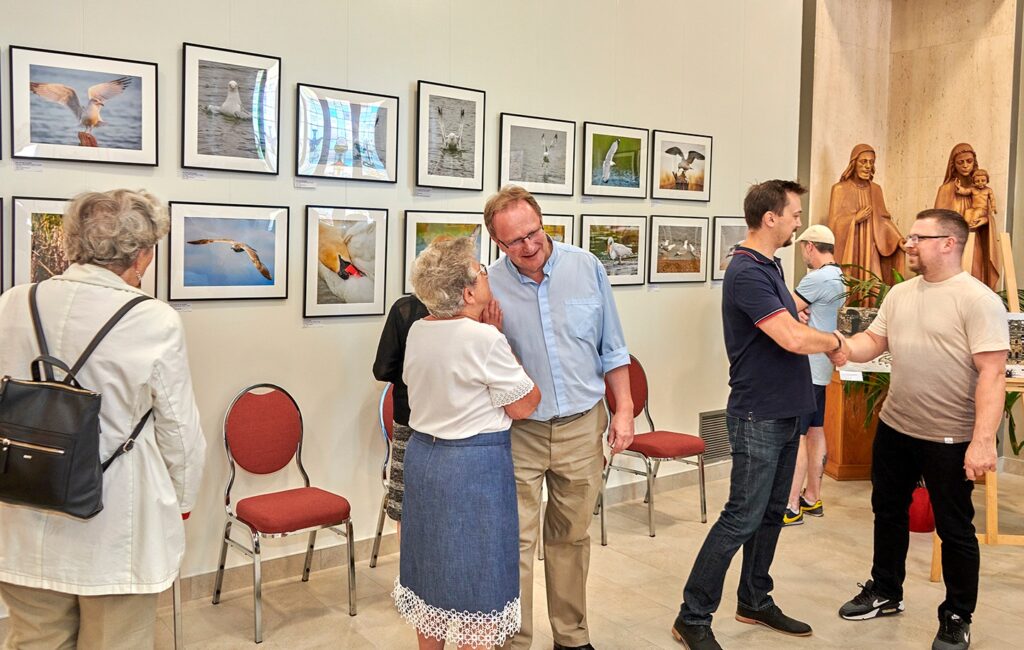
While numerous and strong, they could have developed a long-term vision…
Maybe so, but it was missing. When I arrived, it was the 90th anniversary of the foundation of our parish. I said it was a good time to think about what we could learn from our history and what we needed to rethink. We managed to put together a timeline for the past 90 years and was very surprised to see that the year 1992 was roughly the watershed. The parish was founded in 1928, the first permanent pastor arrived in 1929, the first church building was bought in 1944, scouting started in 1949, the St. Elisabeth Hungarian School was established in 1950, the parish building was purchased in 1951, a new parish building was built in 1969, the Jesuit novitiate started in 1978, a new church was built in 1985, then a park was purchased and numerous organizations such as youth, married and pensioner clubs, choirs, Kodály dance ensemble, etc. were founded and flourished in the late 1980s, early 1990s. The last large-scale building program took place in 1992, when they extended the youth center, adding another floor. From then on, a process of decline started in all aspects, to varying degrees and at varying speed.
I attribute this change to a lack of vision. Before the Hungarian regime change, communism was the common enemy that largely held Hungarians together, which suddenly disappeared—this shows that a common enemy isn’t constructive, at best it can temporarily glue people and interests together, but it cannot create common goals. After 1992 everybody sat back, because there was a good community structure and a big new building. But they no longer had goals and after a while, everything started to fall apart. This building was new compared to most Hungarian churches in the diaspora, but it needed the same attention and, if necessary, efforts to preserve it. Yet, this community has lost longer-term visions, smaller and larger goals.
That’s why you decided to dedicate 2018–19 to finding a vision. Have you found partners for it? Were your points of view accepted?
I couldn’t do it on my own. The essential question was whether we could talk honestly about whether we were or would be in trouble. The opposite of progress is when the answer to everything is: ‘We’ve been doing it this way for 50 years; why change?’; ‘It’s fine as it is’. But my reply was: the fact that you’ve always done it this way isn’t an answer. I was accepted quickly, but it was difficult to talk about the problems for a long time. The fear of the future is perhaps the most difficult thing to talk about in the diaspora. For example, we have a very good Parish council. They come from different backgrounds, are intelligent and get along well. But it was only in my sixth year that we were able to talk about the future: what will our community be like in five years from now? After a whole year, we managed to get to an open and constructive discussion when they finally confessed: they were afraid that they would be much fewer and unable to control their future.
They can’t see the future of their families, let alone of their community…
Exactly. However, we can only start thinking about the future if these fears are articulated. We should be able to acknowledge that assimilation is inherent in the diaspora. That is why the date of regime change is so important. We, Hungarian Jesuits, drew the conclusion at that point about relocating to Hungary. I know it’s very difficult for those who have children, grandchildren and friends here, but the issue of assimilation must be discussed! For example, we are now at the annual scout leadership training camp, where one of the very strong value propositions is the Hungarian language. Perhaps scouting is the one having the strongest hold on preserving the Hungarian language of all the big organizations in the diaspora. That means a lot of energy. Those who are involved recognize it. The fact that even here some children speak English doesn’t mean they are bad, it means that’s a reality. The question is: do we want to deal with it? And if so, how? I think it’s very interesting to see to what extent we can acknowledge the fact that diaspora life automatically implies linguistic and cultural assimilation. There’s a growing geographical dispersion; mobility is very characteristic in North America. As the new generations of Hungarians get less by number, it’s becoming increasingly difficult for them to find Hungarian spouses, even if they’d like to. The chances of marriages of mixed linguistic and cultural backgrounds are increasing. In 2018 we finally started to talk in small and larger groups, in several stages, about how we see the community, what our strengths and weaknesses are, what we can learn and what challenges we face. This gave us quite a lot to do.
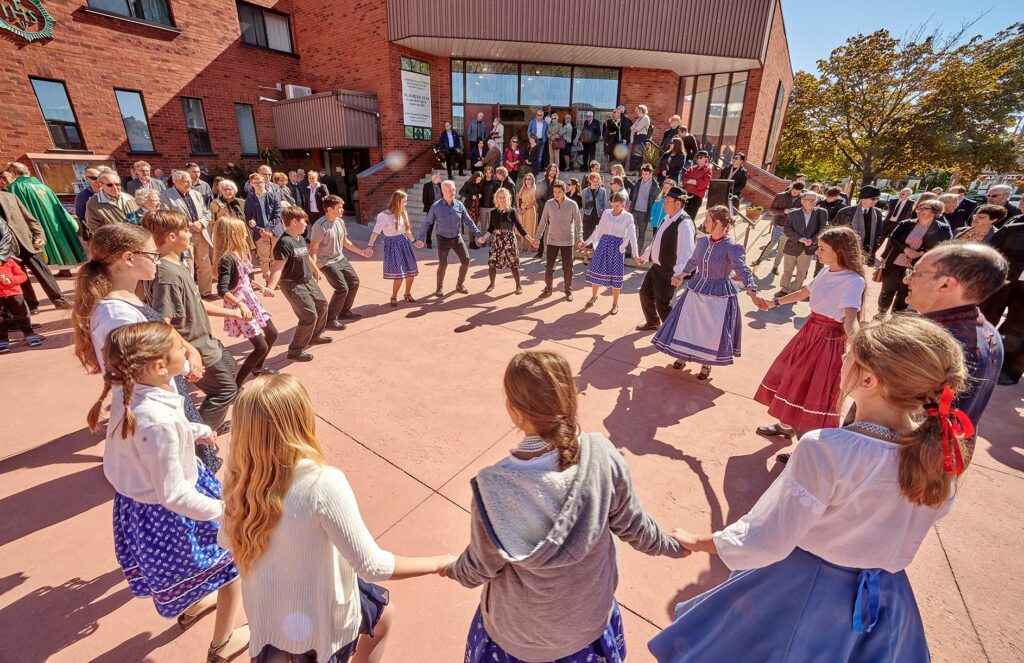
What tasks have you come up with for the coming years?
First and foremost: we will be fewer by numbers, but with maybe a healthier and more stable age composition. We can create a smaller but more genuine community where everyone feels at home, can find a service for themselves and understands that the only way to move forward is for everyone to actively contribute. We should pay more attention to intergenerational programs, prioritize attention and resources to support young people and develop greater collaboration. Perhaps I’ve said nothing new. We have said one more thing, which perhaps follows from the previous ones: in the foreseeable future we’ll reach a time when there will still be a need for a Hungarian Catholic community, a school and scouts, but financial resources will be scarce as the community becomes too small to maintain all of these.
The idea of a smaller but more genuine community was also expressed by Pope Francis during his visits to Budapest. But is this sustainable?
That depends on many things. Let me bring in one more factor causing fear which exists in many places: when the community starts to realize that their financial resources dry up, a vicious circle of budget cuts starts which ultimately strangles the community. I’ve not seen a Catholic community that had to close because there weren’t enough financial resources, but I’ve seen them run out of people, or faith, or both. I think it’s worth focusing on the human factor. Therefore, we completely reversed the logic: I proposed that we shouldn’t charge each other rent, people should simply give as much as they can as a donation. In addition, we clearly communicate the expenditures—clear speech helps. While not everything is about money, people have become more generous. As a result, we are actually more self-sustaining now than we were a few years ago.
Director of Sík Sándor Scout Park Gyuri Kovács told me the same…
Yes, that’s how it works, especially with such a large real estate portfolio. But there is also a question here: what do we do about the situation where we are losing a lot of people because of linguistic assimilation? One answer, for which I am very grateful, is that the Hungarian school, scouting and folk dancing complement and strengthen each other very well from a linguistic point of view. English can be used in the folk-dance circle, while Hungarian language skills are a prerequisite in scouting. Hungarian school stands in between. However, the situation is different in pastoral ministry. The group I prepared for the confirmation didn’t speak Hungarian well enough to properly understand and express themselves, so after two or three sessions I switched to English. The parents weren’t upset at all, they understood my reasons. Another example: when there is a marriage ceremony, a baptism or a funeral mass, my first question is: what language speakers will be present? If it’s 80 per cent English, 20 per cent Hungarian, I suggest having it in English. That shouldn’t scare us either. Families are usually very understanding, sometimes even ask for it, so that everyone could be included in the special family event. However, this is a growing trend. Those who start school here will become English speakers—the question is: at what level can they learn and retain their second language, that is, Hungarian?
There are quite big differences within families. Where does this lead to?
We have said: it’s part of our parish community’s vision to start thinking bilingually. That was a big leap. We are at a very good location, but people come from 100–150 km away. For the past 20 years, the weekday services Masses have been in English. In the meantime, a non-Hungarian Catholic community has developed in the area who love this church. Our basic vision was to start developing a parallel ministry where non-Hungarian speaking families can join. On Sunday we have the 9am English service and the 11am Hungarian service, and there is a meeting place in between. After the latter, there is always a cultural program, which non-Hungarian-speaking churchgoers can also join. We believe that the community has a long-term need to function as a Hungarian missionary place, but we must not exclude those who don’t speak Hungarian (well). The non-Hungarian community can contribute to the life of our community in increasing proportions…
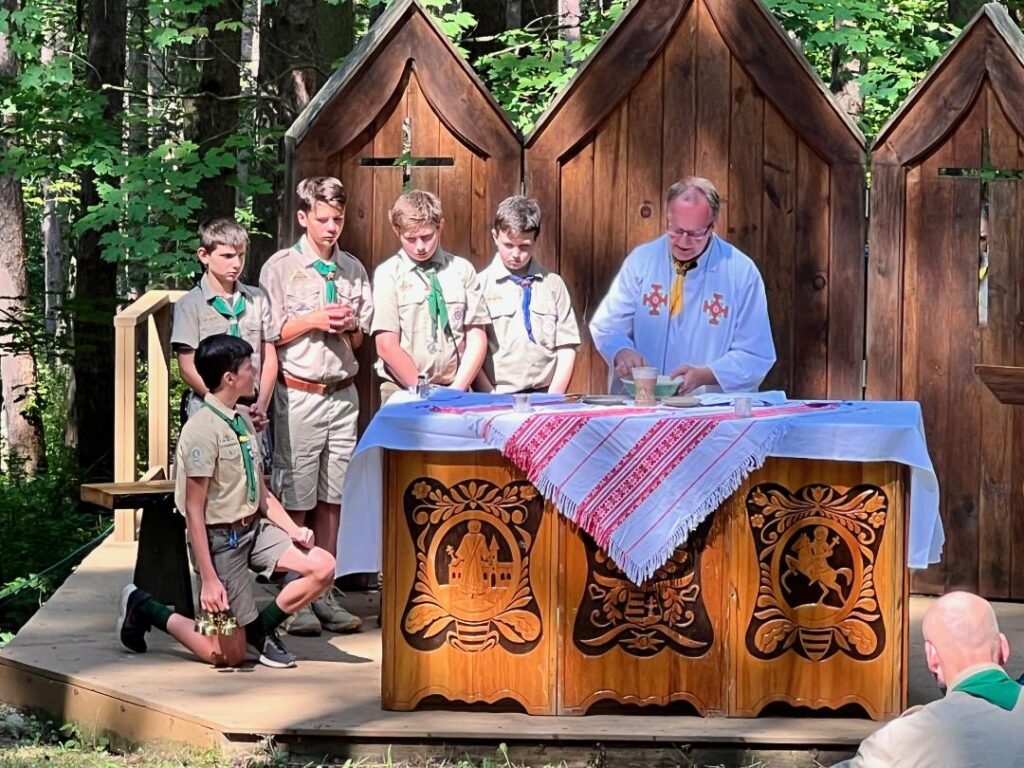
Please elaborate on this. How many people are you talking about?
There are 250–300 people attending a Sunday Hungarian service, and the number of English speakers has started to increase, they are now at about 50 per mass and their financial and physical contribution is already visible around the church. They live nearby and are approachable. When I’m away, they water the flowers and keep the garden tidy. 90 per cent of the time members of the much smaller English community come to help clean during Advent and Lent. For decades, the Catholic community has had a pilgrimage by bus to the Canadian Martyrs’ Pilgrimage site. This year only a few people from the Hungarian community have signed up, meanwhile, the tiny English community became more and more interested. So many of them signed up that the initial 28-seater bus had to be changed to a bigger one. That’s when I said: this is the point where I’m not going to force the Hungarian community to participate. Anyone who applies after the deadline will be a guest of the English community. It is very interesting and symbolic that the English-speaking community is now able to take over traditions from us.
Another topic. What is the ideal length of a service for a pastor here?
My 101-year-old predecessor served for 40 years. He was a very capable fatherly figure but got stuck in that role. I think 7–8–10 years is the period when you can put your all into it, after that you don’t notice as much what’s needed, so it’s good both for the pastor and the community to change. On the other hand, some come from Hungary for too short periods of time. I think the minimum should be five years. Many think everything is the same here. That’s not true, everything is very different. In Hungary, for example, a priest would never be the caretaker and director of a culture complex, but here he typically is. It’s important that there is reflection which is transferred to have continuity. We need to develop a culture of reflection: what the core values are and what we want to focus on. I’m trying very hard to do this in Canada and we have a nice tradition of gathering and reflecting together with other Hungarian Catholic priests in North America once a year. The Covid pandemic had a strong impact on that process and there was another challenge: the Bishop of Hungarians Abroad, Rev. Cserháti, had recently passed away. It’s very important to have a new, active bishop in charge.
The church seems to be the main player in Hungarian intra-community cooperation, at least in Toronto. Can you give some local examples?
Church communities are indeed the most stable in their traditions, legal structures, and buildings, but they cannot survive in the long term without cooperation, also because of the strong wave of secularization sweeping across North America. That is why we need to be very careful that our efforts of cooperation are never presented as a way of ‘pushing’, but as an offer: something we can do for the greater common good.
‘Church communities are indeed the most stable in their traditions, legal structures, and buildings, but they cannot survive in the long term without cooperation’
In Toronto, there’s a good tradition that I inherited from my predecessors: a strong, personal, informal, ongoing relationship between the three major church communities. We sit down three times a year to talk through common issues, because if the three of us are behind a matter, it has credibility. Another example: we are very consciously and generously open to hosting any meaningful and valuable Hungarian program. The Hungarian Engineers Association of Canada is a group with a long tradition. They’ve started meeting monthly and bringing in general intellectual topics for which they were looking for space and support. We are very happy to support them, not only by providing a place to meet, but also advertising and welcoming members of our community who may not have known them before to visit their events. It’s an opportunity for enrichment together.
Another example: we have the only Hungarian weekend high school outside of Europe called Helikon. So long as there were many more Hungarians here, they always had enough students, and operated at an external location. When we started to talk, it turned out that their students came mainly from the St. Elisabeth Hungarian School, but even the intake from us was dwindling, because they weren’t visible enough. We invited them to our building, so that parents and children could see them. It’s a typical win-win situation. It has made the school easier to run, the two schools and the church started to become more connected, and it’s been better for parents, too. It’s all a logistical feat, because there isn’t a single empty hole in this huge complex on Saturday mornings, but it seems to work. Everything can be done with good intentions, and in the process, we begin to see its value.
Read more Diaspora interviews:

